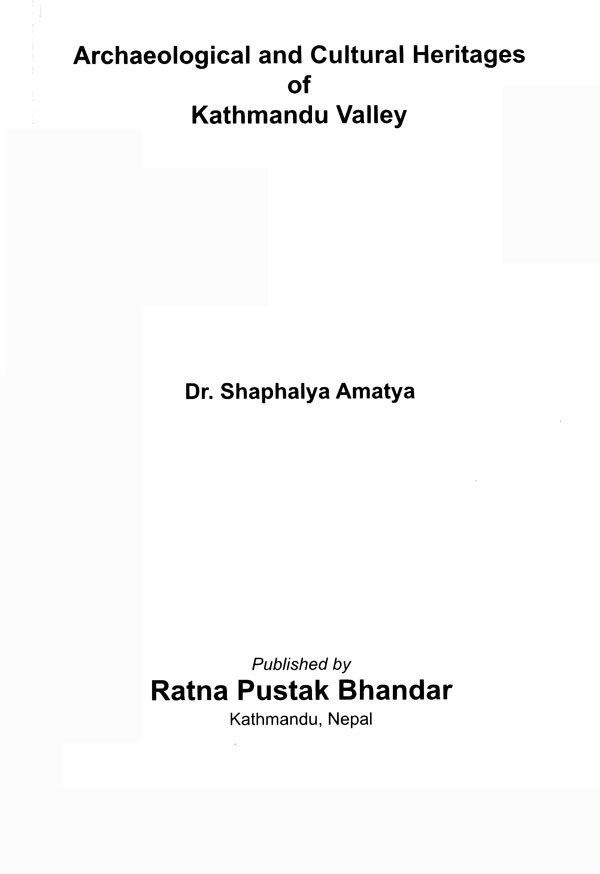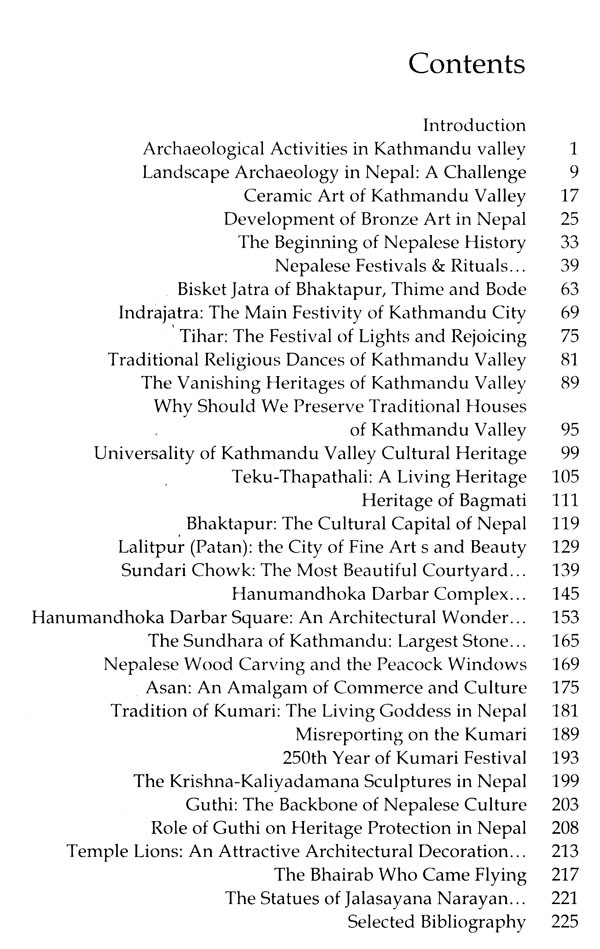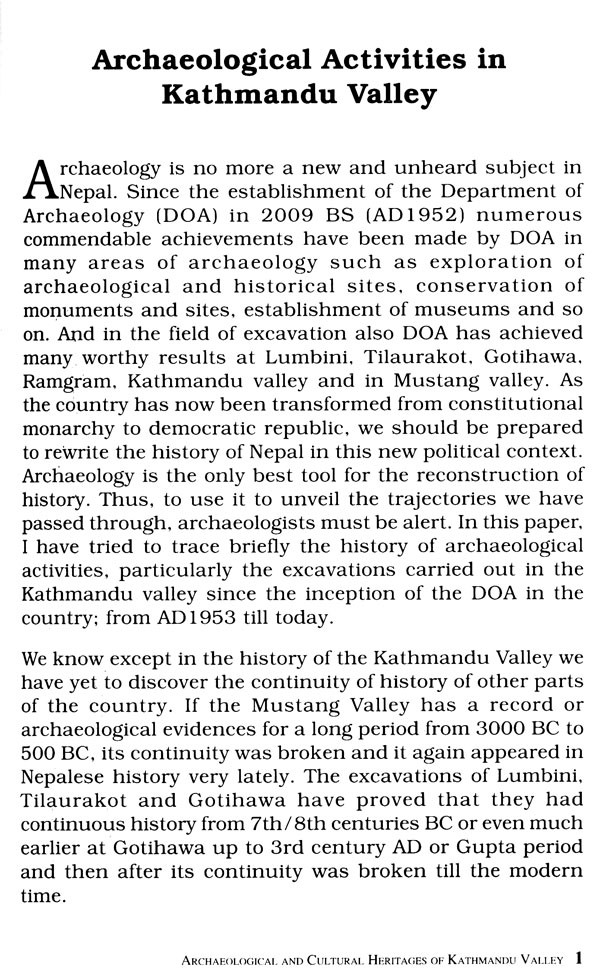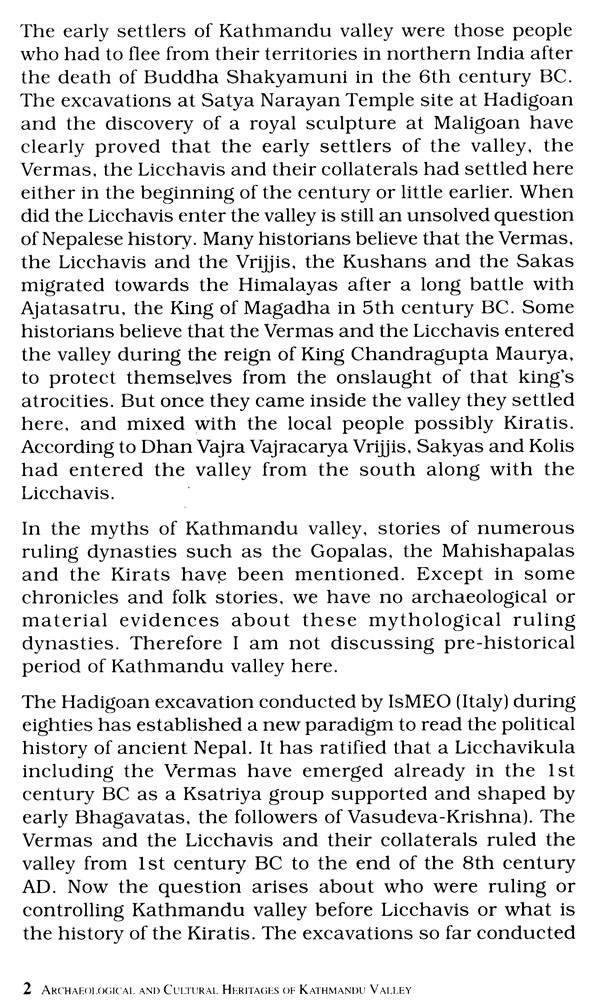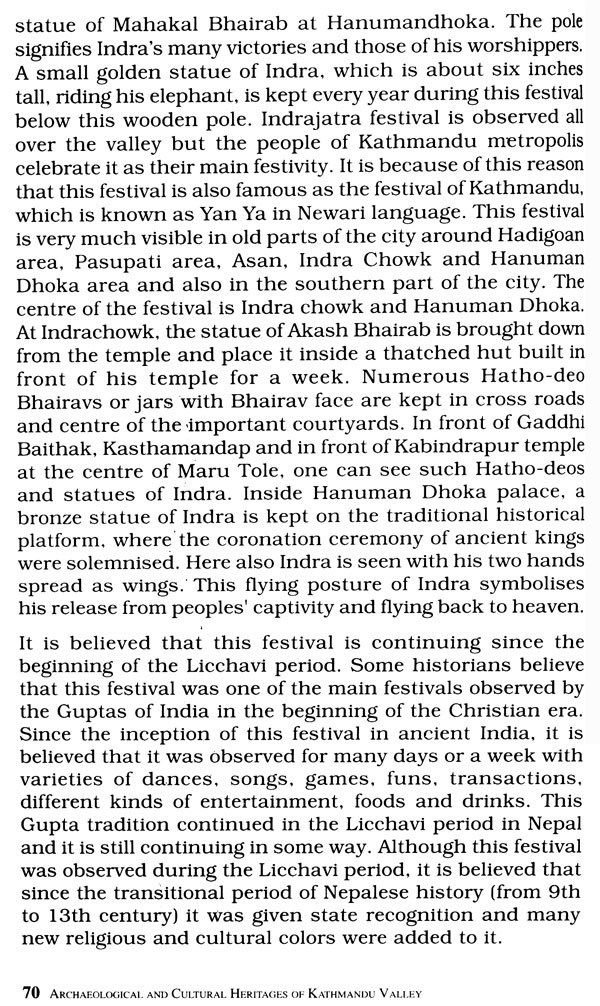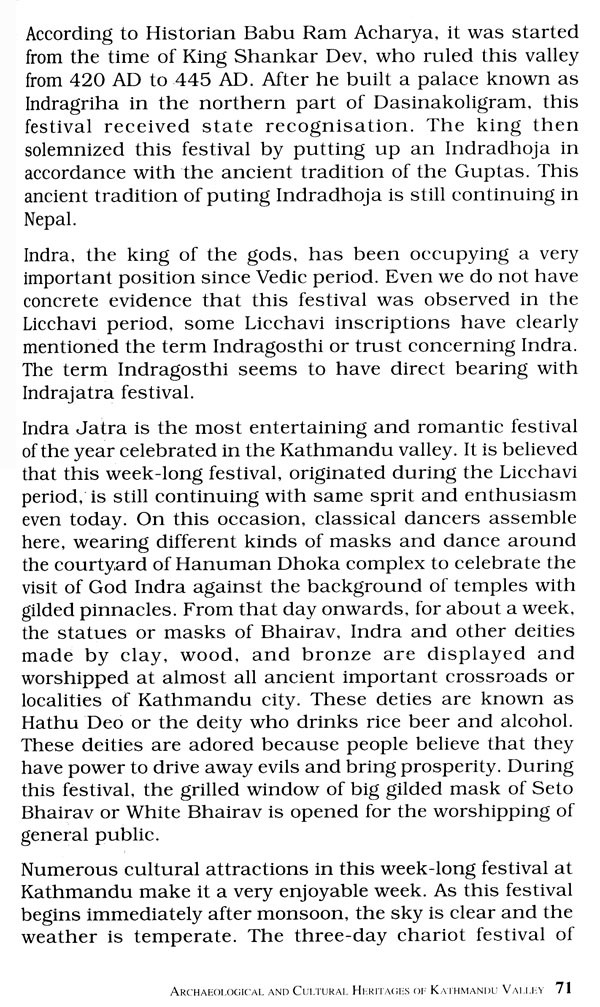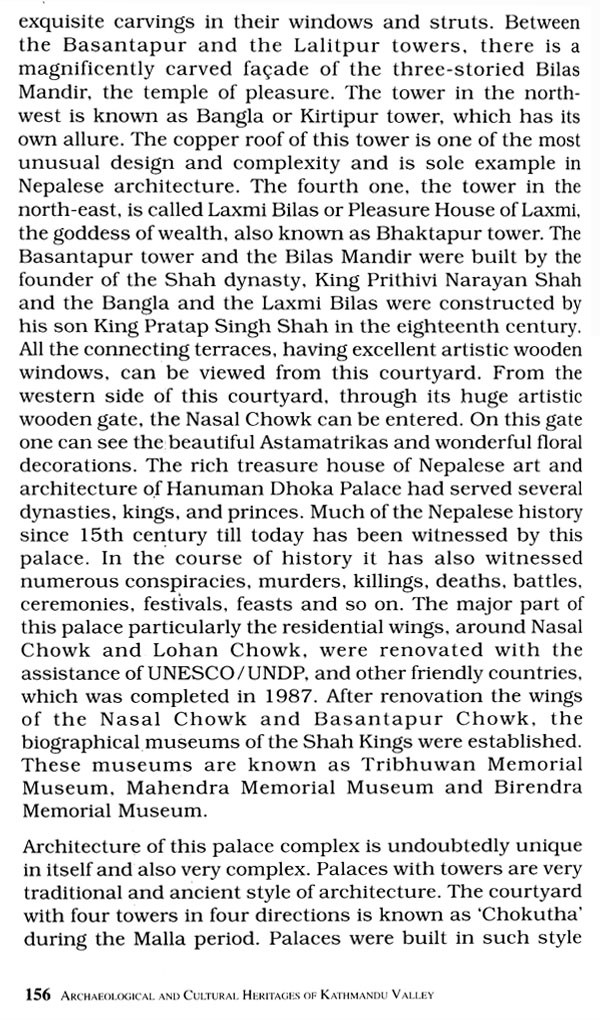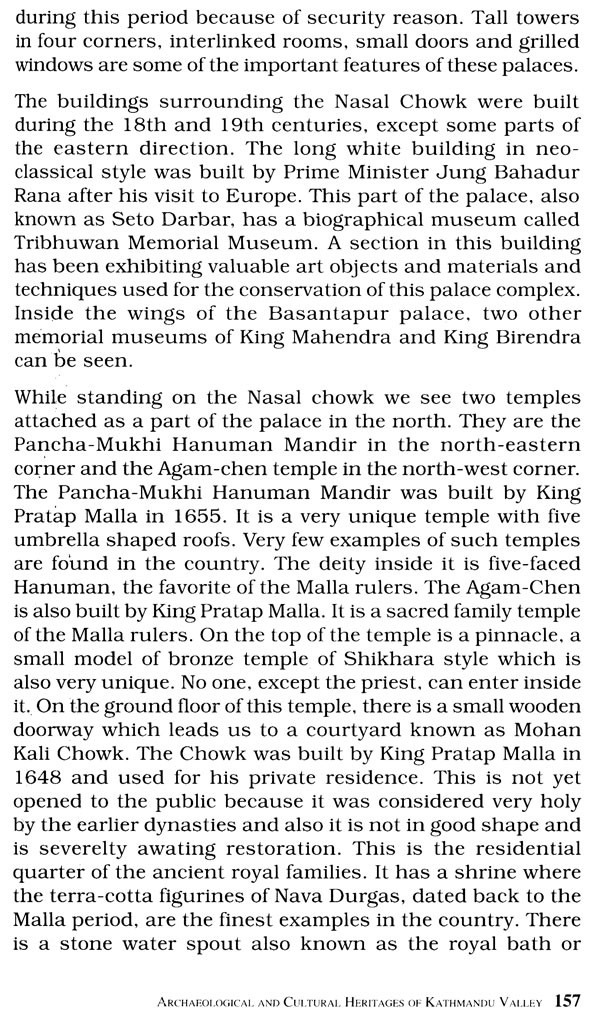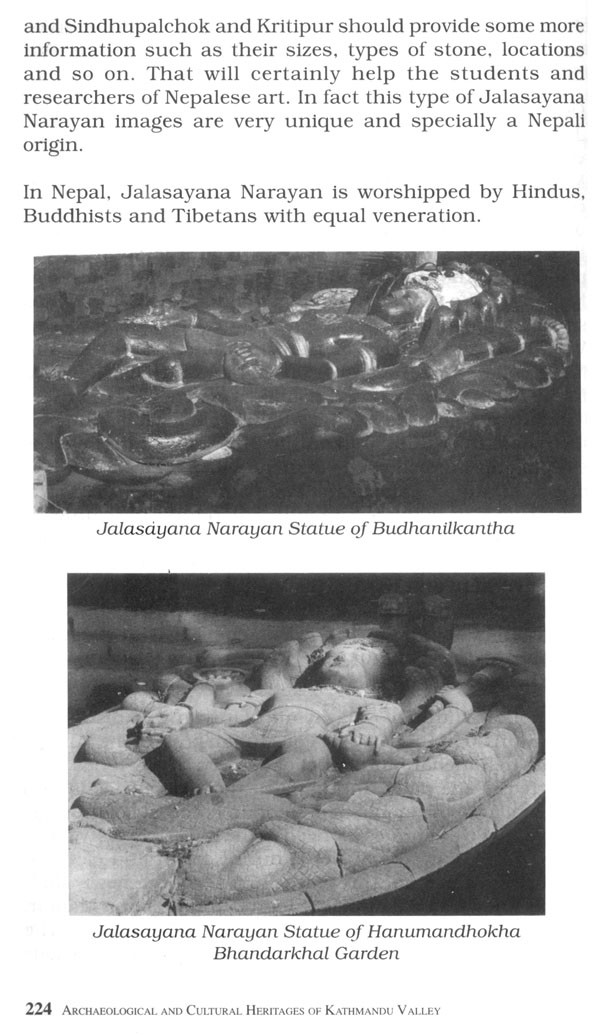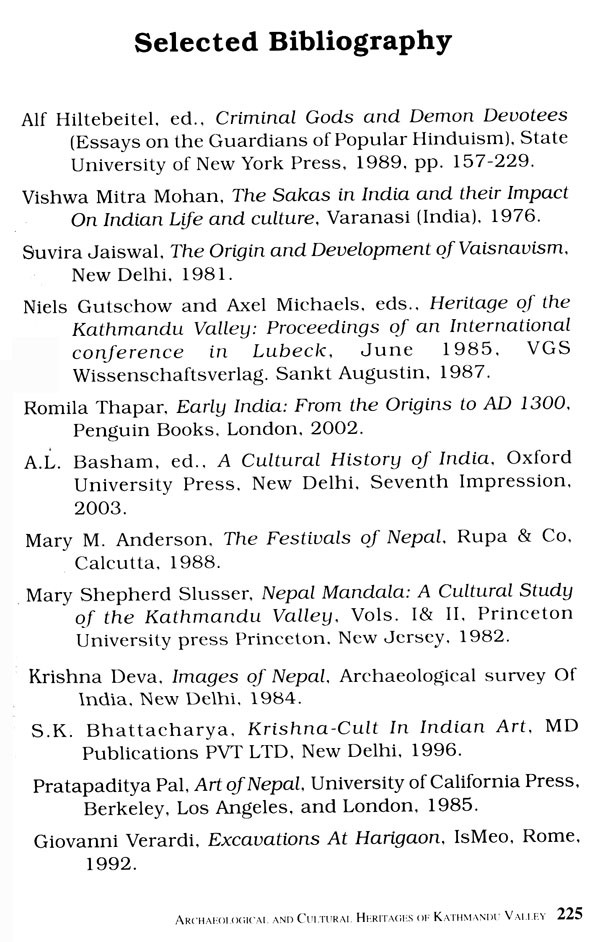About the Author Shaphalya Amatya (b1944), a distinguished art and culture critic, has worked in various positions in the Department of Archaeology and Ministry of Culture, Tourism and Civil Aviation of the Government of Nepal. He has written extensively on the issues of conservation and preservation and different other aspects of Nepalese art and culture. Dr. Amatya was educated first at Tribhuvan University where he received his Master's degree in History and later at Jawahar Lal Nehru University, New Delhi where he received a M.Phil and Ph.D. in History. He has authored more than a dozen books in Nepali and English languages. His most noted published works include, Archaeology in Nepal (Nepali) (Sahja Prakashan, Kathmandu, 1980), Some Aspects of Cultural Policy in Nepal (UNESCO, 1983), Art And Culture Of Nepal: An Attempt towards Preservation, (Nirala Publications, New Delhi, First Edition, 1991), Bagmati: A Monument Guide (Heritage Nepal, Kathmandu, 1992), Kathmandu Nagarayan (Nepali) (Urbanization of Kathmandu) (Royal Nepal Academy, Kathmandu, 1996), Art and Culture of Nepal: An Attempt Towards Preservation, (Nirala Publications, Second Edition, 1999), Vishow Sampada: Kathmandu Upatyaka (Nepali) (World Heritage: Kathmandu Valley). (UNESCO, Kathmandu, 2001), Pani Ra Samskriti (Nepali)( Water And Culture). (Nepal Water Corporation, Kathmandu, 2003), Rana Rule in Nepal, ( Nirala Publications, New Delhi, 2004). Religious Dances of Nepal Mandala (The Kathmandu Valley), Chaka Dabu, Kathmandu, 2005 and Water And Culture (English Version), JVS, Kathmandu, 2006, Monument Conservation in Nepal: My Experience With The World Heritage Site of Kathmandu Valley. (Vajra Publications), 2007. Widely travelled cultural critic and historian, Dr. Amatya has been to USA, Japan, China, France, Germany, Italy, Australia, Sri Lanka, Pakistan, Bangladesh, UK, Thailand, the Netherlands and Austria to lecture on the Nepalese art and culture and to participate in various International Seminars and conferences. A highly acclaimed scholar, Dr. Amatya has also contributed research articles in international publications such as Heritage of Kathmandu Valley: Proceedings of an Internal Conference in Lubeck, June 1985, (VGHW issenschaftsverlag Sankt Augustin, 1987, Germany), Heritage of Asia And Oceania (ICOMOS, Sri Lanka, 1993), Journal of Bengal Art (The International Centre For Study of Bengal Art, Dhaka, Bangladesh, 2002) and many others. Currently, Dr. Amatya works as cultural consultant and lives in Kathmandu. He is the Executive Director of Heritage Nepal, a cultural consultancy firm. He is also one of the contributors to Abia (South and Southeast Asian Art and Archaeology) Index Project (IIAS, Netherlands). He has been awarded by Environment Millennium Award for Preserving Archaeological Heritage of Nepal in 2000 and Baburam Acharya Rastriya Pratibha Purashkar in History and Culture by HMG of Nepal in 1999.
Introduction Kathmandu valley: the common dwelling of Gods and people Once a lake and now a bowl-shaped valley. the Kathmandu Valley is surrounded by Chanda Girl. Nagarjun, Shivapuri, Phulchoki and other foothills, and is drained by the holy river Bagmati. What makes the valley unique is the combination of its magnificent natural environment with the man-made environment--its towns, settlements and cultural sites. These are still parts of the vibrant culture, and not just fossils of bygone civilization. While constituting only a small part, the valley has been both politically and culturally dominant in the history of the country.
The discovery of some Neolithic tools inside the valley has proved that it was once a domain of the pre-historic people. According to legends and some other literary sources, the Kiratis ruled the valley before Christian era began. The Hadigoan excavations and the discovery of the life size sculpture of King Jaya Verma with inscription dated 107 BS (185 AD) have proved that the dynasties who entered Nepal after the death of Gautama Buddha, during 5th century BC. occupied this valley.
As we do not have enough information about the Verma dynasty, let me consider it as early Licchavi dynasty. It was a known fact that after the attacks of Bimbisara, Virudhaka and Ajatasatru, the rulers of North India in the 5th century BC, the tribal Janapadas of the Sakyas. Licchavis, Vrijis, and many others were disappeared in the course of time. They migrated towards the Himalayan foot hills for their safety. In the later centuries, many other ruling clans such as Kolis, Sakas, Kushans, Gupta (Aviras) and others also migrated towards the foot hills of Himalayan belt and slowly moved towards the Kathmandu valley. But not all of them could establish their dynasties.
**Contents and Sample Pages**
